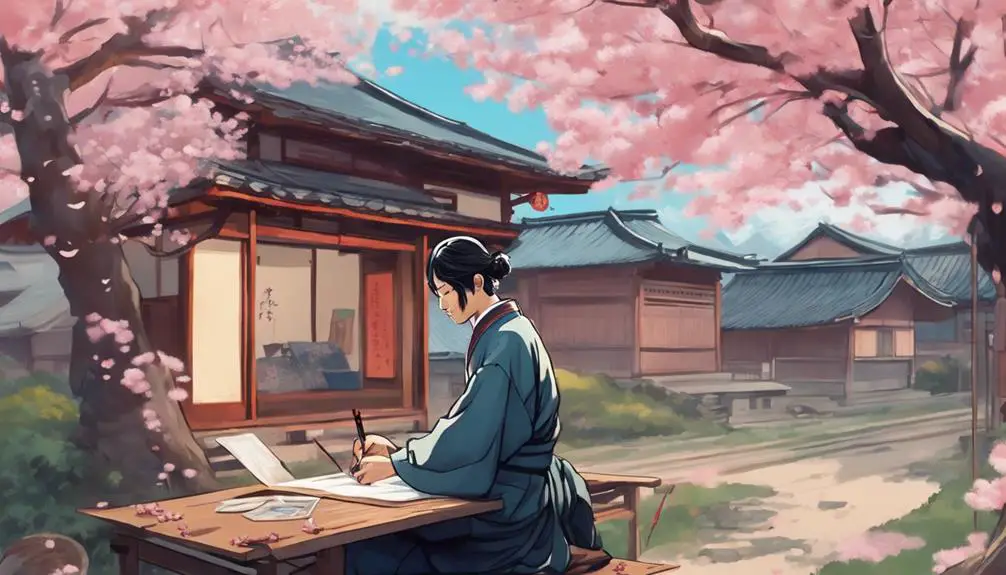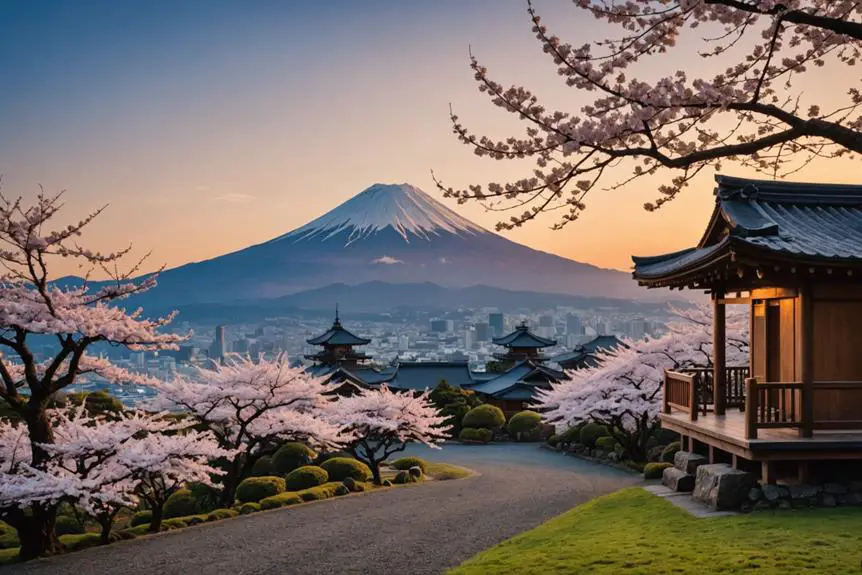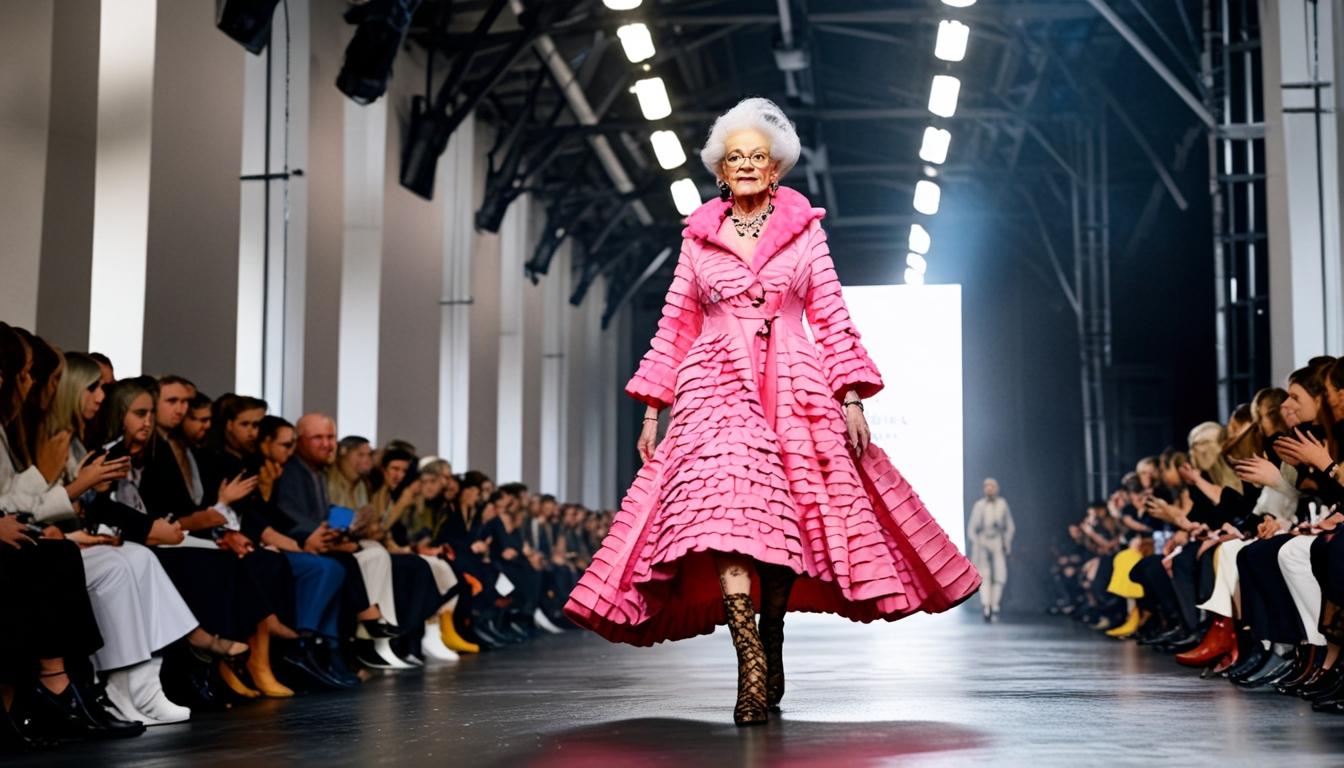The House of Kenzo was founded by Kenzo Takada, who was born in Japan and dreamt of blending Eastern and Western fashion. After studying at Bunka Fashion College, he moved to Paris in 1965, where he created a unique style infused with vibrant colors and bold patterns. In 1993, he established the Kenzo House, a creative space that reflects his artistic vision and cultural heritage. Over the years, the brand has flourished, with strong global sales and exciting collaborations. Kenzo's story is one of innovation and influence in the fashion world, and you'll discover even more fascinating details ahead.
Kenzo Takada's Early Life

Kenzo Takada's early life in Himeji, Japan, shaped his future as a groundbreaking fashion designer. Born on February 27, 1939, into a family of hoteliers, Kenzo was surrounded by a culture that appreciated aesthetics and hospitality. His curiosity about fashion ignited when he discovered his sister's fashion magazines. Through those pages, he began dreaming of a career where he could express himself creatively.
This passion for design parallels the journey of iconic brands like Ralph Lauren, which also emphasizes cultural influences and craftsmanship, highlighting the importance of vintage identification in maintaining brand heritage.
To pursue this passion, Kenzo enrolled at Bunka Fashion College in Tokyo, a prestigious institution known for its rigorous fashion programs. Here, he honed his skills and learned the art of design, blending traditional Japanese influences with modern techniques. After graduating, he briefly worked in Japan, gaining valuable experience that solidified his foundation in fashion.
In 1965, Kenzo took a bold step and moved to Paris, the epicenter of global fashion. This was a defining moment in his career. Starting as a freelance designer, he immersed himself in the vibrant fashion scene. His early experiences in Japan and the cultural richness of Paris influenced his design philosophy.
Kenzo began to merge Eastern and Western aesthetics, which would become a hallmark of his work. His journey from Himeji to Paris wasn't just about physical relocation; it reflected a deep commitment to evolving Japanese fashion on a global stage.
Kenzo Takada's dedication to his craft and unique perspective set the stage for his future success, paving the way for a new era in fashion.
Establishment of Kenzo House
In 1993, a remarkable transformation took place in Paris's 11th arrondissement with the establishment of Kenzo House, a unique blend of personal residence and creative space. Founded by the iconic designer Kenzo Takada, this house served as a sanctuary where creativity thrived.
Spanning 13,778 square feet over four stories, the property is centered around an interior courtyard garden, showcasing a harmonious mix of Eastern and Western influences.
When you step into Kenzo House, you can't help but feel the serene ambiance created by its architectural features. The use of French oak louvres allows natural light to dance throughout the space, while a Japanese-style koi pond adds a tranquil touch.
These design elements work together to create a calming environment, perfect for inspiration and relaxation.
In 2018, renowned architect Kengo Kuma redesigned Kenzo House, enhancing its Zen-inspired aesthetic. This redesign not only preserved the cultural significance of the original structure but also elevated it to new heights of luxury.
Today, Kenzo House is available for sale through Christies International Real Estate, solidifying its status as a significant piece of art and history.
Creative Vision and Design Philosophy

The vibrant colors and bold patterns of Kenzo's collections reflect a creative vision that celebrates cultural diversity and artistic expression. Kenzo Takada, the brand's founder, drew inspiration from his Asian roots, melding traditional Japanese garment elements with modern design. This approach not only highlighted comfort and freedom of movement but also embraced a sense of multiculturalism through fashion.
Takada's design philosophy revolved around unstructured silhouettes and relaxed forms. He often favored garments without zippers, promoting a youthful and liberated aesthetic that resonated with many. This focus on ease and wearability allowed wearers to express themselves effortlessly, embodying the spirit of the brand.
You can see the influence of art in Kenzo's vibrant prints, reminiscent of Henri Rousseau's lush jungle scenes. This connection between art and fashion is essential to Kenzo's identity, enriching the collections with a playful, adventurous vibe. The bold colors and clashing prints invite you to explore the beauty of diversity, making each piece a celebration of life and creativity.
Moreover, Kenzo's fashion shows were theatrical and immersive experiences. With elements like live animals and extravagant presentations, they created an enchanting atmosphere that reflected the brand's playful spirit.
This innovative approach not only dazzled audiences but also reinforced Kenzo's commitment to pushing boundaries in the fashion world. Through his creative vision and design philosophy, Takada crafted a legacy that continues to inspire and excite fashion enthusiasts around the globe.
Cultural Impact and Market Presence
Cultural resonance defines Kenzo's impact on the fashion landscape, as its vibrant aesthetic and innovative designs have captivated global audiences. The brand became a prominent player in the fashion world, with annual sales hitting around 150 million euros by 2011, showcasing its strong market presence.
Operating nearly 145 stores across the globe, Kenzo has established a significant foothold in Southeast Asia, Japan, and Europe, reflecting its broad international appeal.
The fashion house's creative approach has led to high-profile collaborations, like Kenzo x H&M, which expanded its visibility and reached diverse consumer demographics. These partnerships not only introduced Kenzo to a wider audience but also reinforced its position as a trendy and accessible brand.
Additionally, celebrity endorsements from icons such as Jay Z, Beyoncé, and Rihanna have solidified Kenzo's cultural relevance, intertwining the brand with popular culture and making it a favorite among fashion enthusiasts.
Kenzo's strategic focus on regaining control of its distribution in China highlights its adaptability in a rapidly changing market. By responding to evolving consumer preferences, the brand guarantees it remains at the forefront of the industry.
All of these elements combined show how Kenzo not only influences fashion trends but also resonates deeply with a global audience, making it a key player in today's fashion landscape. Through its creative designs and strong market presence, Kenzo continues to leave a lasting impact on the world of style.
Evolution and Future of Kenzo

Kenzo's journey has been marked by notable changes since Kenzo Takada's retirement in 1999, leading to a dynamic evolution that reflects the brand's adaptability and forward-thinking approach.
After Takada's departure, the Kenzo brand shifted through various creative directions, with Felipe Oliveira Baptista at the helm until 2021. His tenure brought innovation, but it was Nigo's fresh perspective that truly revitalized the brand when he took over.
As Kenzo evolves, it's focusing on regaining control of distribution, especially in China, to guarantee sustained growth. The brand is adapting to market trends, making strategic moves to stay relevant in the competitive fashion industry.
You'll notice Kenzo engaging younger audiences through savvy digital marketing campaigns and high-profile collaborations like Kenzo X H&M, which considerably boosted its visibility and appeal.
With an impressive annual sales figure of around 150 million euros by 2011, Kenzo has established a strong presence in the global market.
The brand isn't stopping there; it plans to expand its retail presence, with nearly 145 stores worldwide. Kenzo aims to create immersive shopping experiences while also enhancing its online retail strategies.
This combination will cater to a diverse, global audience, guaranteeing that Kenzo remains a vibrant and influential name in fashion for years to come.




